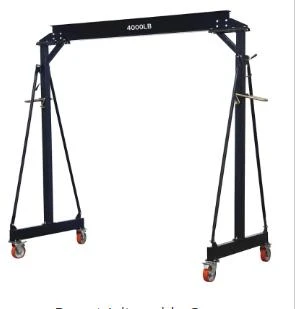Effective 2-Ton Magnetic Lifter for Heavy Load Handling and Industrial Applications
Understanding the 2 Ton Magnetic Lifter Key Features and Applications
In the realm of material handling and logistics, the efficiency of lifting and transporting heavy loads is paramount. The 2-ton magnetic lifter stands out as a powerful and versatile tool, designed to streamline operations in various industrial settings. This article explores the key features, benefits, and applications of the 2-ton magnetic lifter, providing insight into why it has become an indispensable piece of equipment in many industries.
What is a 2-ton Magnetic Lifter?
A magnetic lifter is a device that uses powerful permanent magnets to lift and move heavy ferromagnetic materials. The 2 tons in its name refers to its maximum lifting capacity, making it suitable for handling objects weighing up to 2000 kilograms (approximately 4409 pounds). The magnetic lifter is particularly advantageous for moving steel plates, pipes, and other similar items without the need for slings or chains, which are often cumbersome and time-consuming to use.
Key Features
1. High Lifting Capacity One of the most crucial features of the 2-ton magnetic lifter is its ability to lift heavy loads with ease. This capacity makes it ideal for a variety of applications ranging from manufacturing to construction.
2. User-Friendly Design Magnetic lifters are designed for ease of use. Operators can engage and disengage the magnetic lifting mechanism with a simple lever or switch, allowing for quick and efficient load handling. This design helps reduce operator fatigue and enhances productivity.
3. Safety Considerations Safety is a top priority in any industrial operation. The 2-ton magnetic lifter is equipped with safety features such as a safety latch that prevents accidental disengagement of the load. Additionally, the lifter's strong magnetic force ensures that loads remain securely in place during transfer, minimizing the risk of accidents.
4. Durable Construction Typically made from high-quality materials, a 2-ton magnetic lifter is built to withstand the rigors of heavy-duty use. Its robust construction ensures longevity, reducing the need for frequent replacements and repairs.
2 ton magnetic lifter

5. Portable and Lightweight Despite its strong lifting capacity, magnetic lifters are often lightweight and portable. This allows for easy transport between different work sites and makes it manageable for a single operator to handle.
Applications
The versatility of the 2-ton magnetic lifter allows it to be used across various industries, including
1. Manufacturing In manufacturing settings, magnetic lifters facilitate the handling of raw materials and finished products. They are particularly useful in steel fabrication shops, where the lifting of large metal sheets and components is a regular task.
2. Construction The construction industry benefits from the ability to quickly and safely move heavy steel beams and other structural components. Using a magnetic lifter can significantly decrease the time needed for moving these materials, leading to faster project completion.
3. Warehousing and Logistics In warehouses, magnetic lifters streamline the process of unloading and stacking heavy items, improving the overall efficiency of operations. This tool helps minimize damage to goods during transit, as it provides a secure method of handling.
4. Automotive Industry In automotive factories, magnetic lifters can be used to lift and position heavy metal parts during assembly, reducing the risk of injury to workers and speeding up the production process.
Conclusion
The 2-ton magnetic lifter is a vital tool that enhances efficiency and safety in material handling across various industries. Its robust lifting capacity, user-friendly design, and portability make it an ideal choice for companies looking to optimize their operations. By investing in a magnetic lifter, businesses can improve productivity, reduce labor costs, and enhance workplace safety, making it an invaluable asset in today’s demanding industrial environment. As technology continues to evolve, the applications and functionalities of magnetic lifters are expected to expand, further solidifying their role in modern material handling solutions.
-
Unlock Seamless Relocation with Our Heavy Equipment Moving ExpertiseNewsJun.06,2025
-
Unleash Unrivaled Flexibility with Our Adjustable Gantry CraneNewsJun.06,2025
-
Unleash Heavy-Duty Efficiency with Our Industrial Gantry Crane SolutionsNewsJun.06,2025
-
Revolutionize Steel Handling with Our Magnetic Lifter RangeNewsJun.06,2025
-
Master Equipment Mobility with Premium Machinery Mover SolutionsNewsJun.06,2025
-
Elevate Your Material Handling with Magnetic Lifter TechnologyNewsJun.06,2025
-
YS Permanent Lifting Magnets: The Smarter Way to Handle SteelNewsMay.22,2025
